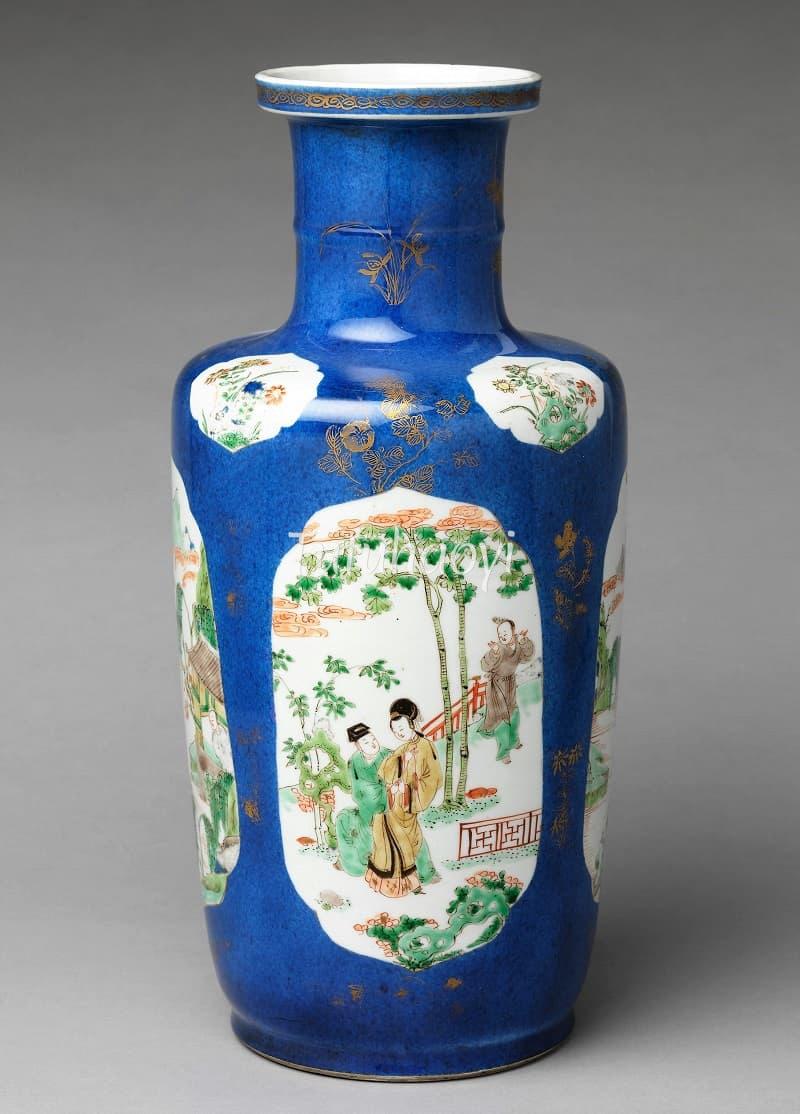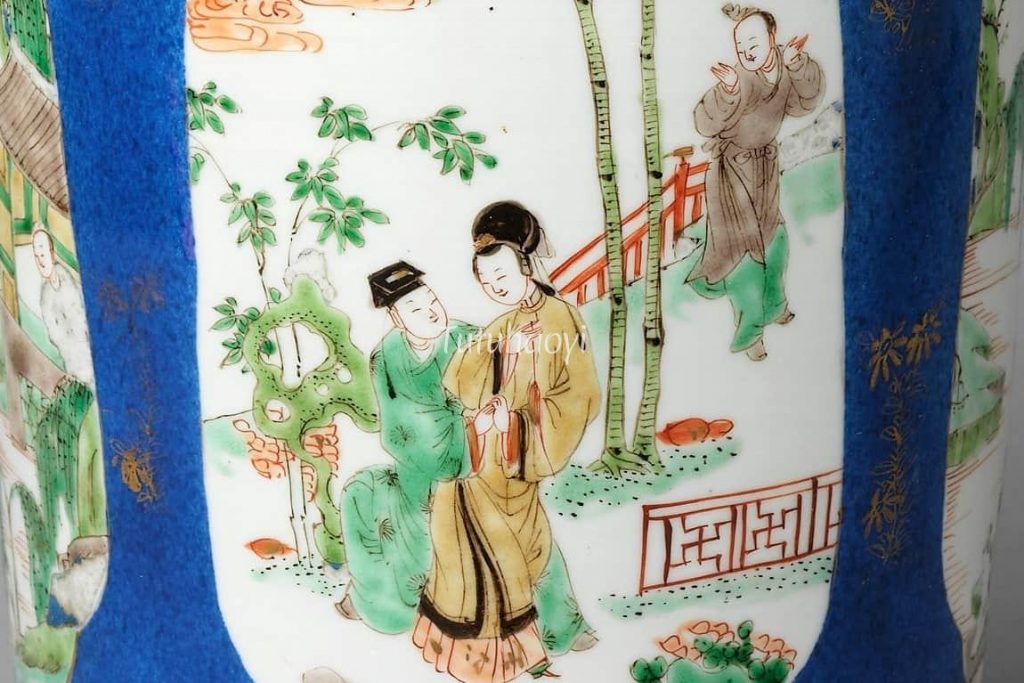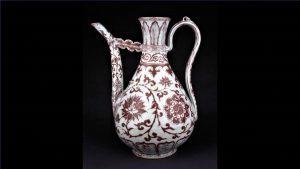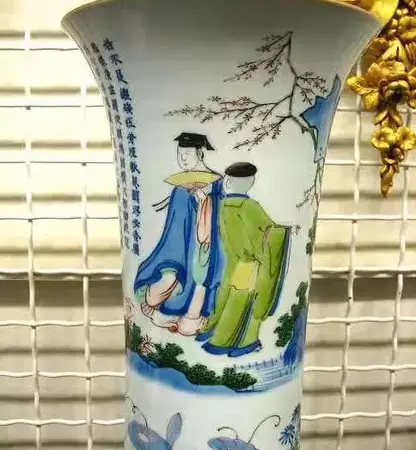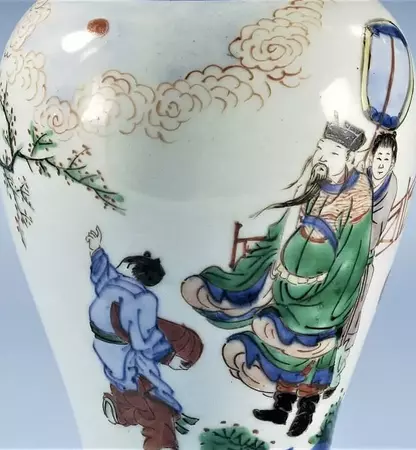Editor: The story scene in this article comes from a marvel play Legend of the Jade Hairpin, which is not to be confused with the scene in another love story Romance of the Western Chamber (Xixiang Ji 西厢记). Dr Yibin Ni will give an overview of the story and tell you the distinctive details which make this figural scene different from the latter.
Legend of the Jade Hairpin (Yu zan ji 玉簪記) is a Ming-dynasty ‘marvel play’, or chuanqi 传奇, which was the major drama genre of the time. The play, consisting of thirty-three scenes, was written by Gao Lian (高濂 fl. 1573-1581) around 1580 and remained to be a popular classic for the following three hundred years. It is a Shakespearean love story of a young couple who were betrothed at birth, torn apart by war, and unwittingly fell in love with each other at a nunnery.
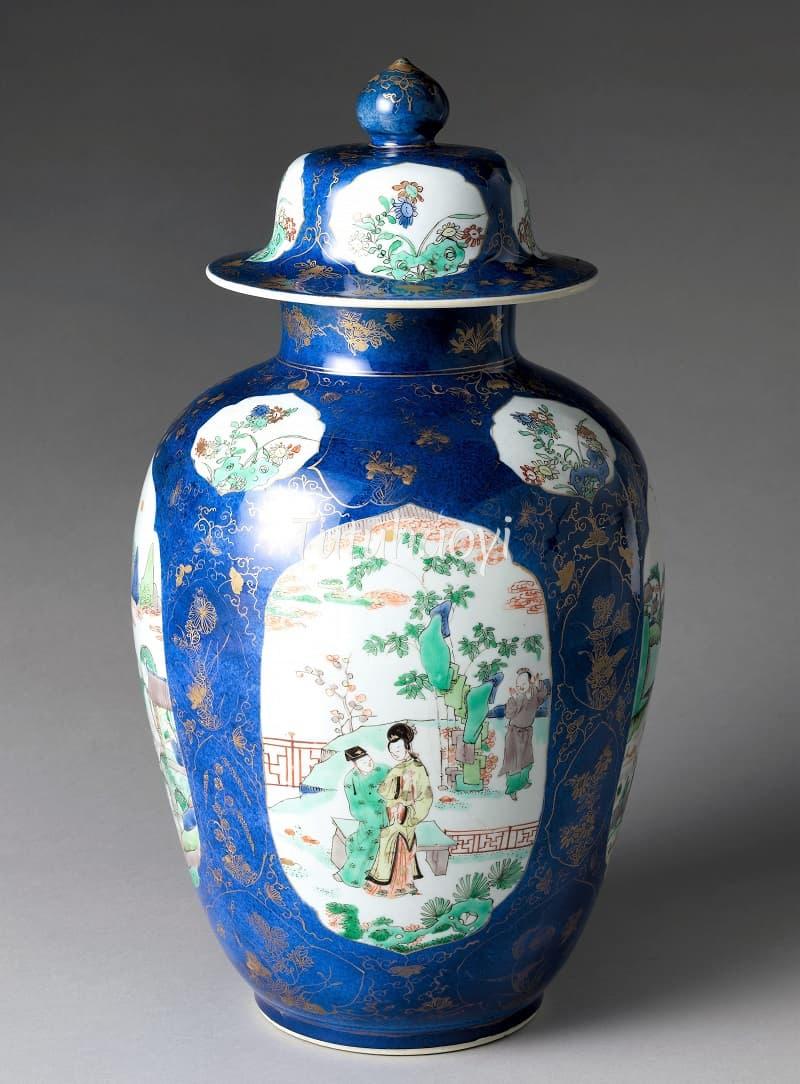
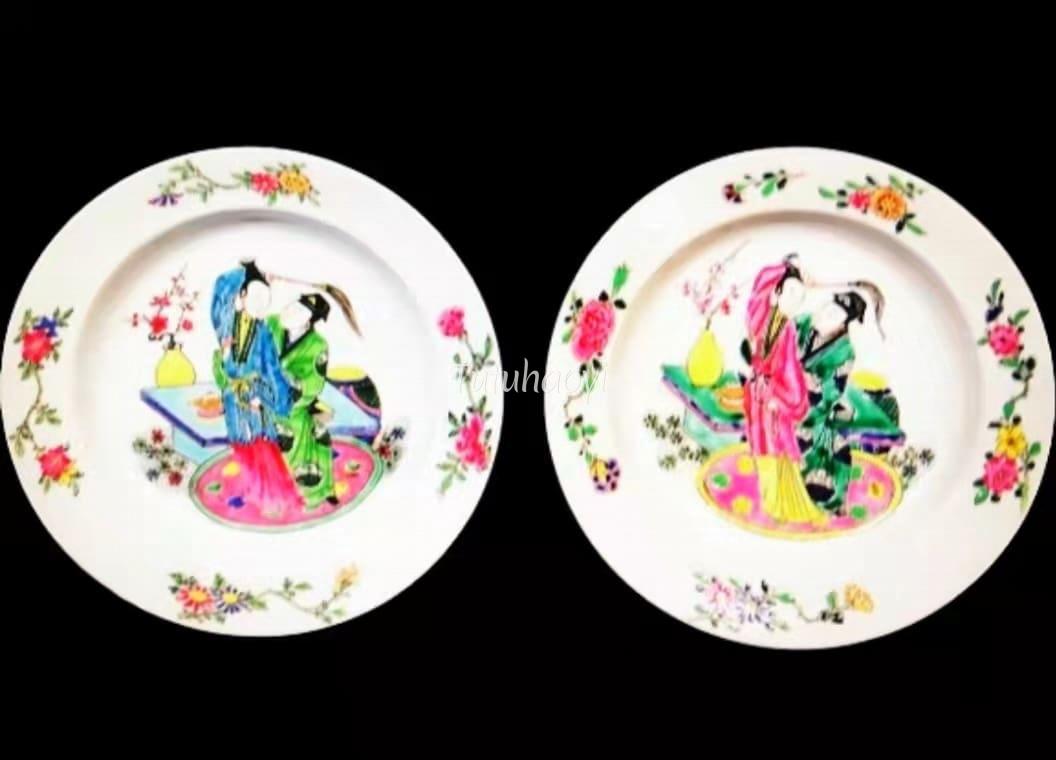
The scene on the dishes of previous Marc Michot collection is a snapshot of Act 19, Consummation of Love after the Revelation of the Girl’s Love Poem. The fly whisk was a traditional trademark of a Daoist nun and was regarded having the function of swatting ignorance and mental afflictions. That is why the female protagonist in the play, Chen Miaochang 陈妙常, is often seen holding one as her distinctive attribute because she was a novice nun.
In Act 19, the lovesick young scholar Pan Bizheng 潘必正 accidentally discovered Miaochang’s love verse and she could no longer repress her love for him anymore. The slightly awkward postures of the couple depicted on the Yongzhen famille rose plate is probably meant to show that the girl is playing hard to get.
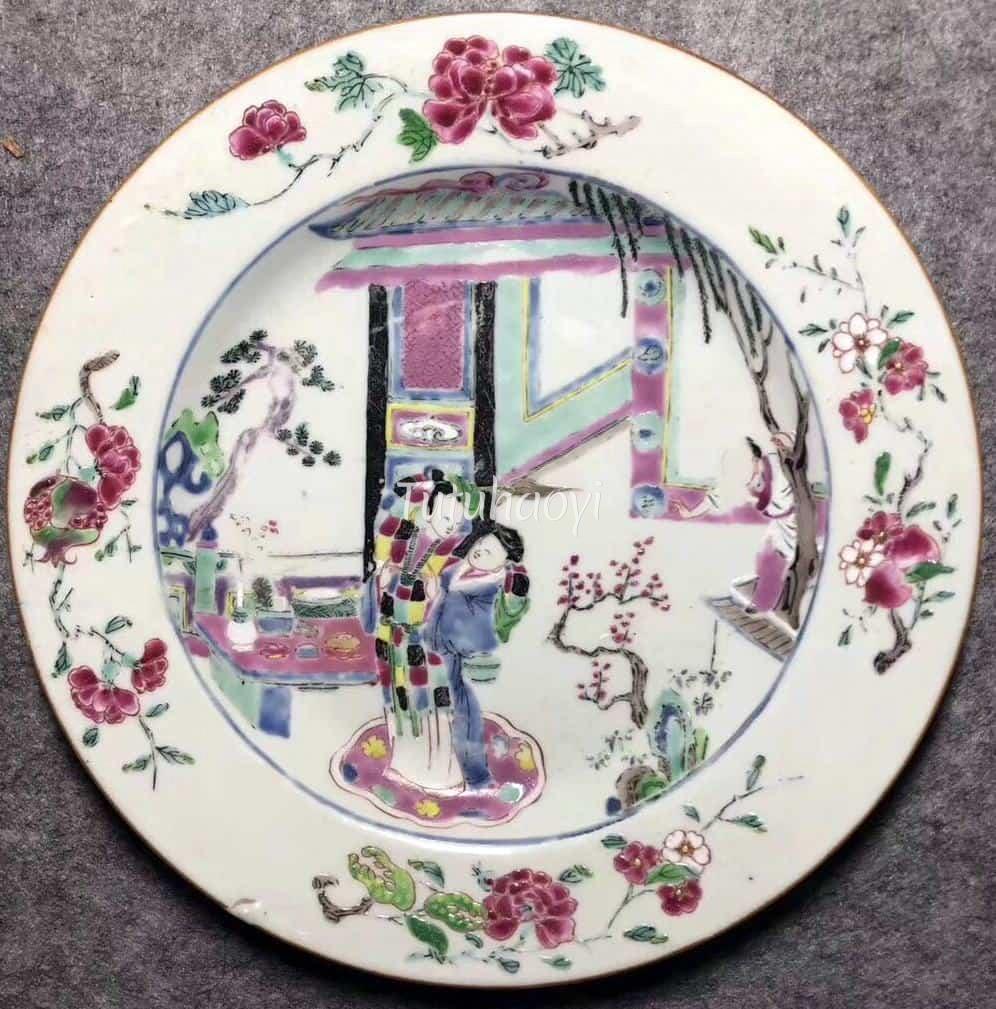
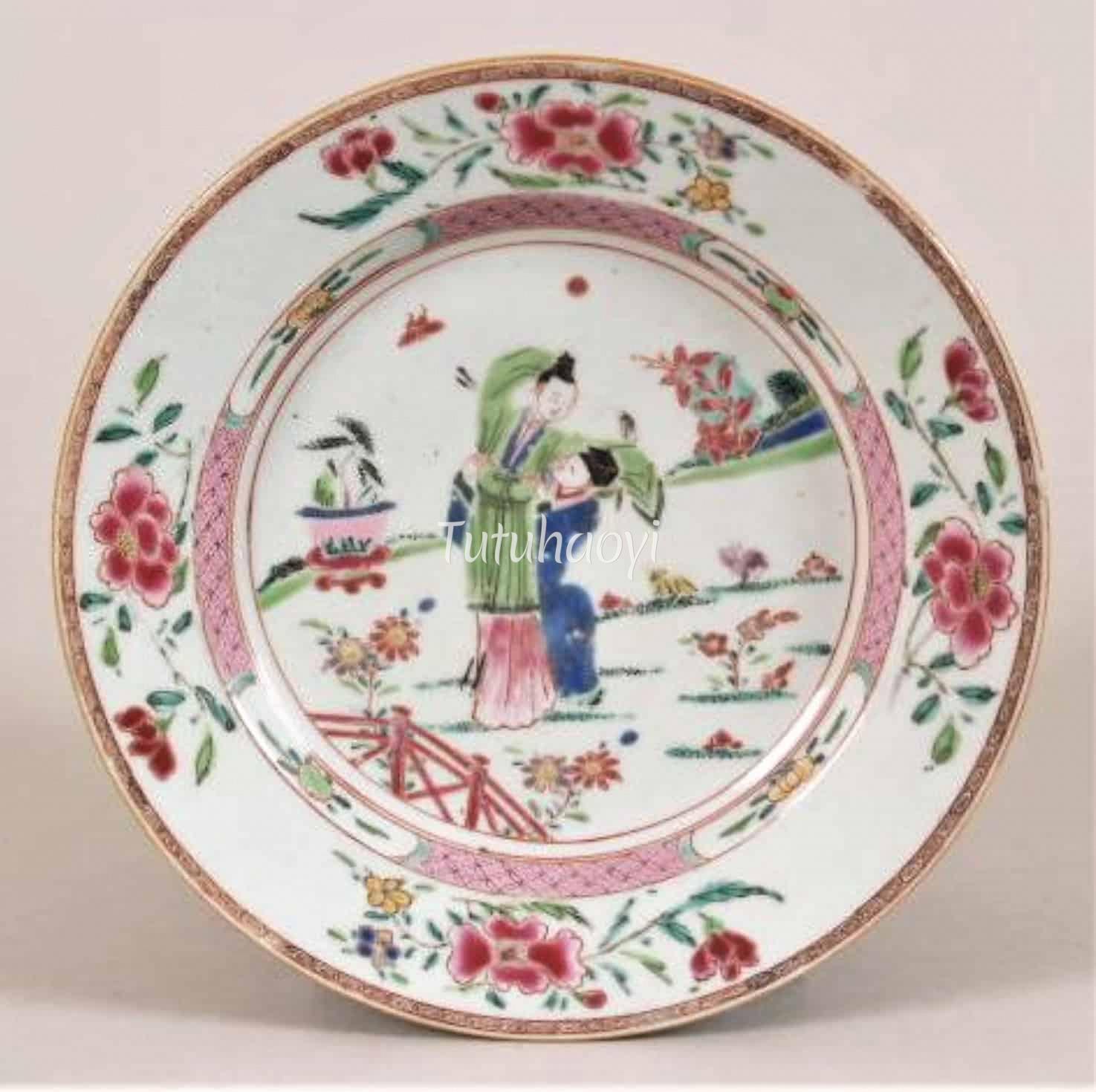
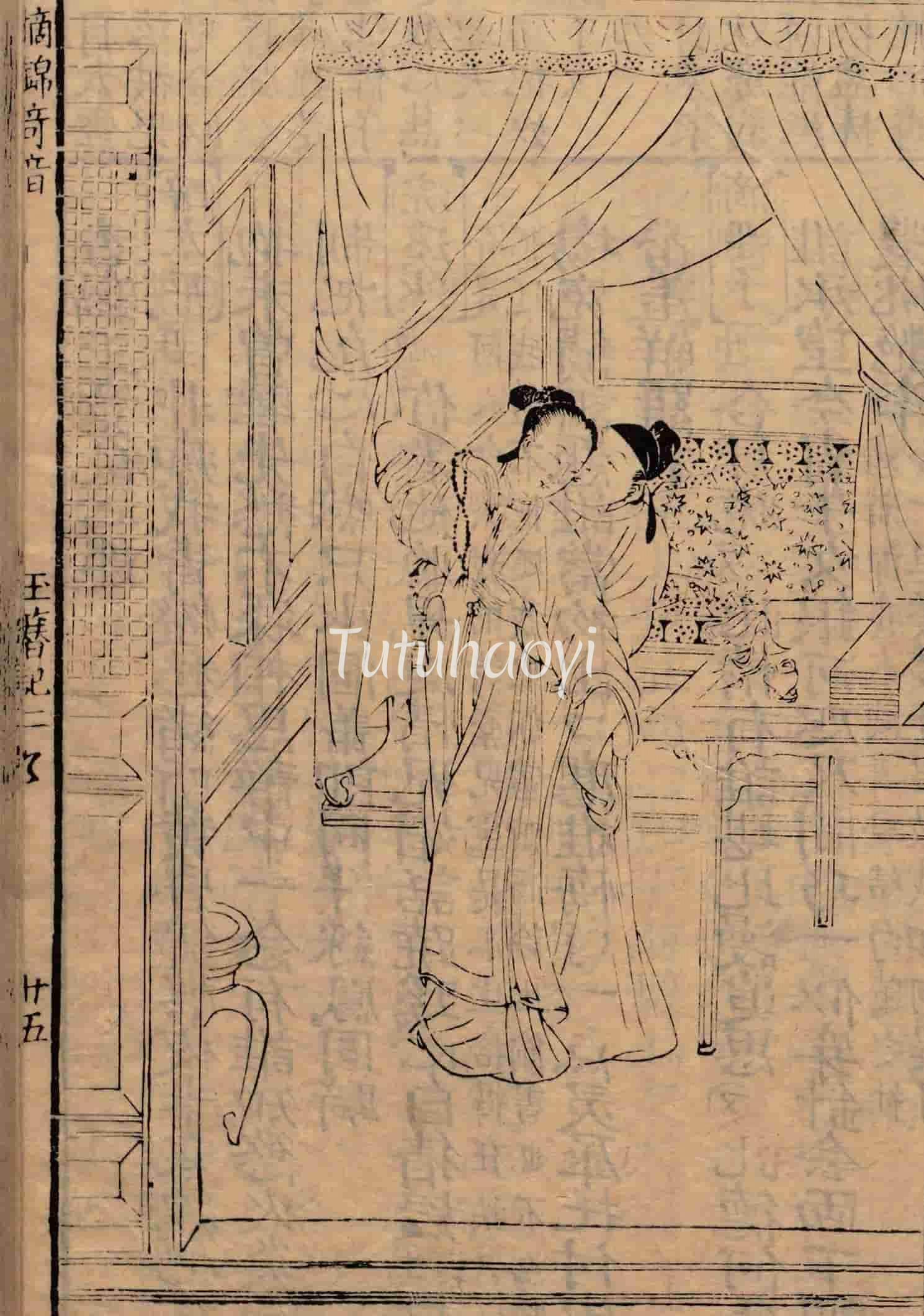
In a more coarsely produced version, the horsetail fly whisk is missing from the nun’s hand. In more sophisticated versions of the same scene, such as a saucer in the collection of the National Gallery of Victoria, Australia, there is an additional figure playing the role of ‘Peeping Tom’, hiding behind the curtain of the ‘Moon window’ or a tree. He is Scholar Pan’s page boy, Ange 安哥, and an opportunist. He took the advantage of the situation and threatened the young couple that he would report their tryst if they didn’t address him as ‘Sir Ange’.


